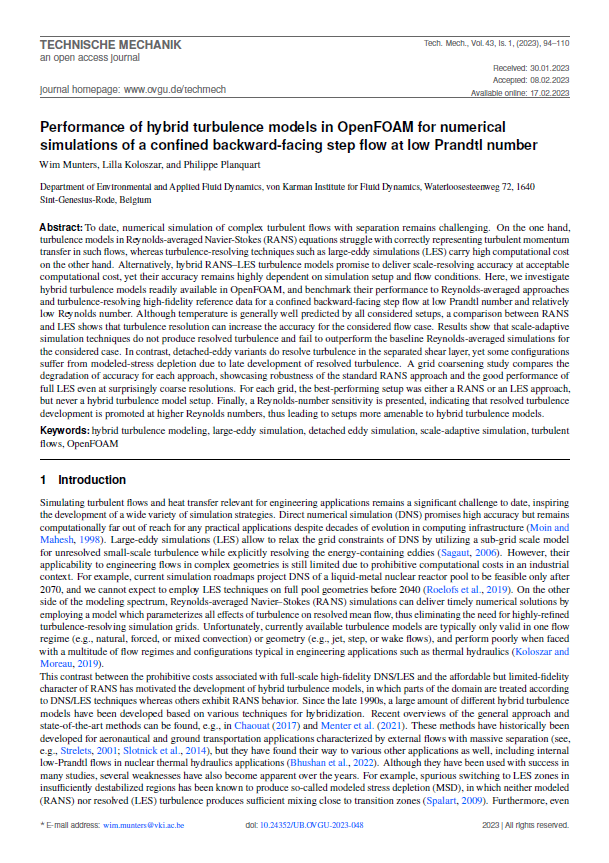Performance of hybrid turbulence models in OpenFOAM for numerical simulations of a confined backward-facing step flow at low Prandtl number
DOI:
https://doi.org/10.24352/UB.OVGU-2023-048Keywords:
hybrid turbulence modeling, large-eddy simulation, detached eddy simulation, scale-adaptive simulation, turbulent flows, OpenFOAMAbstract
To date, numerical simulation of complex turbulent flows with separation remains challenging. On the one hand,
turbulence models in Reynolds-averaged Navier-Stokes (RANS) equations struggle with correctly representing turbulent momentum transfer in such flows, whereas turbulence-resolving techniques such as large-eddy simulations (LES) carry high computational cost on the other hand. Alternatively, hybrid RANS–LES turbulence models promise to deliver scale-resolving accuracy at acceptable computational cost, yet their accuracy remains highly dependent on simulation setup and flow conditions. Here, we investigate hybrid turbulence models readily available in OpenFOAM, and benchmark their performance to Reynolds-averaged approaches and turbulence-resolving high-fidelity reference data for a confined backward-facing step flow at low Prandtl number and relatively low Reynolds number. Although temperature is generally well predicted by all considered setups, a comparison between RANS and LES shows that turbulence resolution can increase the accuracy for the considered flow case. Results show that scale-adaptive simulation techniques do not produce resolved turbulence and fail to outperform the baseline Reynolds-averaged simulations for the considered case. In contrast, detached-eddy variants do resolve turbulence in the separated shear layer, yet some configurations suffer from modeled-stress depletion due to late development of resolved turbulence. A grid coarsening study compares the degradation of accuracy for each approach, showcasing robustness of the standard RANS approach and the good performance of full LES even at surprisingly coarse resolutions. For each grid, the best-performing setup was either a RANS or an LES approach, but never a hybrid turbulence model setup. Finally, a Reynolds-number sensitivity is presented, indicating that resolved turbulence development is promoted at higher Reynolds numbers, thus leading to setups more amenable to hybrid turbulence models.

Downloads
Published
How to Cite
Issue
Section
License
Copyright (c) 2023 Wim Munters, Lilla Koloszar, Philippe Planquart

This work is licensed under a Creative Commons Attribution-ShareAlike 4.0 International License.




